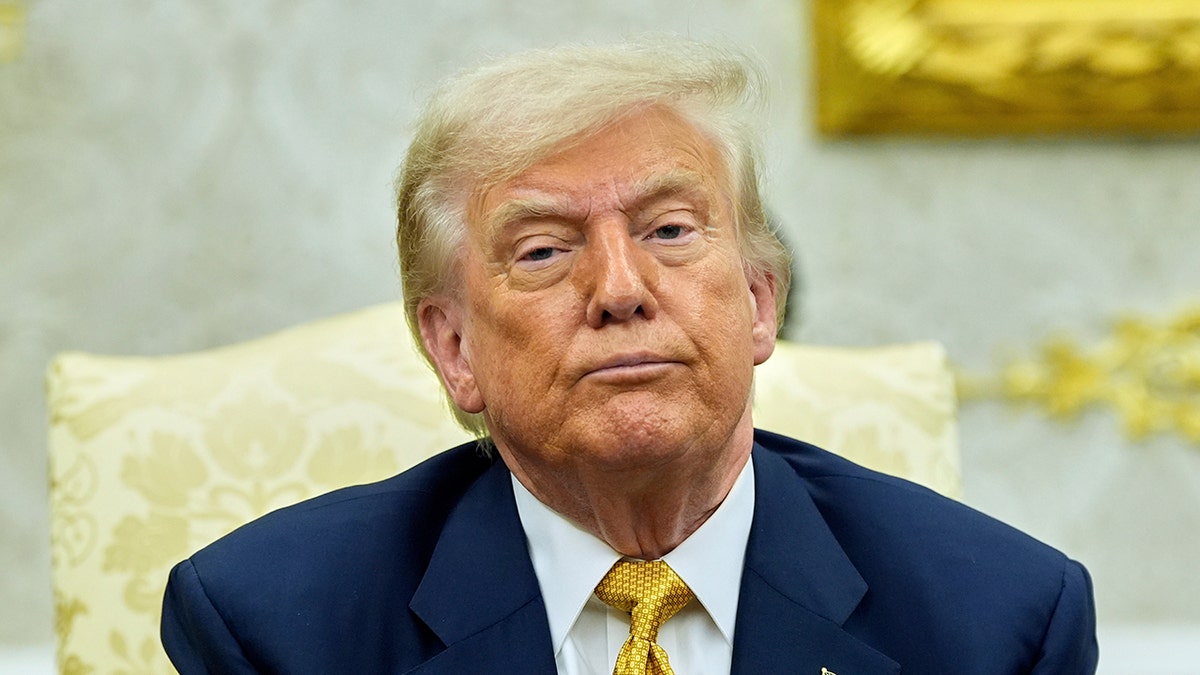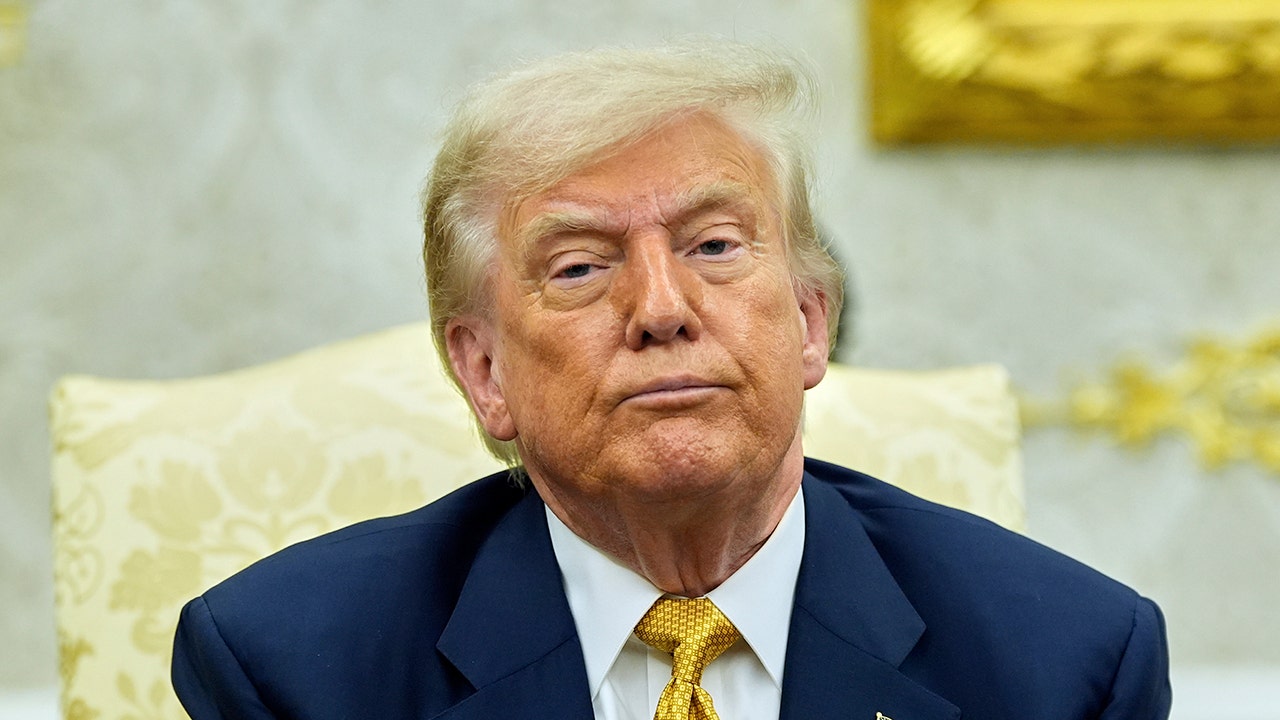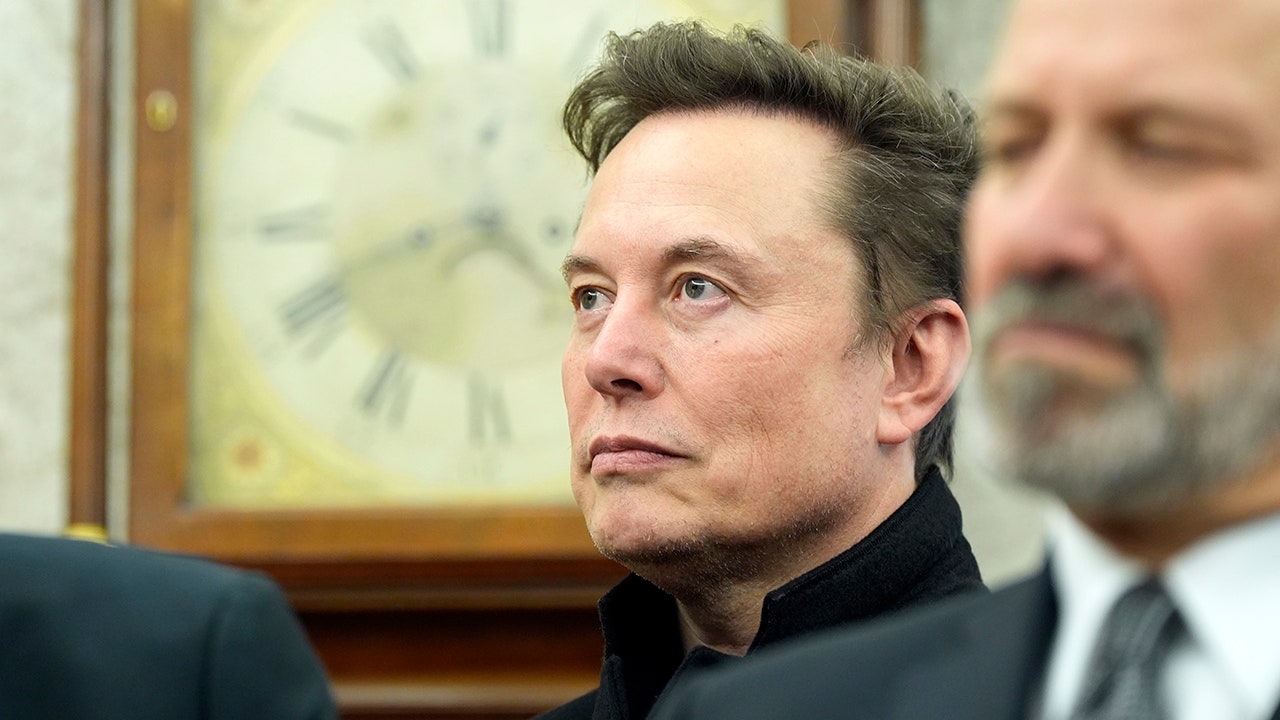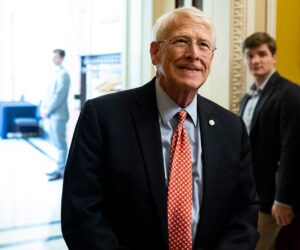NEWYou can now listen to Fox News articles!
Recent economic data has been very solid. Consumers have shown continued resiliency, boosting retail sales up 0.6% for the month of June. The labor market remains solid.
And while the stock market isn’t the economy per se, key market indices, including the broader-based S&P 500, continue to hit all-time highs.
Normally, this would be very good news for a president’s economic agenda. But given America’s current fiscal situation, it is hindering one of President Donald Trump’s main focal points – the hope that the Fed will substantially lower its target interest rates.

President Donald Trump listens during a meeting in the Oval Office of the White House, Wednesday, July 16, 2025. (AP Photo/Alex Brandon)
The American fiscal situation is a precarious one, which has brought about several debt downgrades from the rating agencies, the last being in May, while U.S. debt is supposed to be the “safe haven” investment for the global financial system.
LEFT’S TARIFF DOOMSDAY PREDICTIONS FALL FLAT AS TRUMP’S AMERICA THRIVES
The U.S. debt/GDP ratio is about double what most entities believe is a manageable and sustainable ceiling. Our deficit as a percentage of GDP is at wartime or deep recession levels, without the U.S. being at war or in a recession.
And with such a heavy and growing debt load, now at $37 trillion, the interest cost on that debt is around $1 trillion, which is more than we spend on defense. Having debt financing costs exceed defense spending is not a signal of a healthy country.
President Trump and his administration are rightfully focused on the excessive current interest cost on our debt. And, with more than $9 trillion in debt that has or needs to be refinanced this year, plus another couple trillion from new deficit spending, the cost of debt financing matters.
The higher the interest rates on Treasury debt, the higher the cost of financing and refinancing. That leads to higher deficits, and all else being equal, even higher interest rates as more debt needs to be financed. Wash, rinse and repeat and debt costs and deficits will keep going higher.
So, it is understandable that the president wants lower interest rates – even back to 1% or lower as he has recently mentioned. However, there are several challenges with that.
INVISIBLE TAX: GOVERNMENT DEBT IS CRUSHING YOUR FINANCES
Back to where we started, strong economic data and all-time highs in the market do not signal that interest rates are holding back economic activity. This makes it harder for Fed Chairman Jerome Powell and the Federal Open Market Committee (FOMC) to justify rate cuts given their own mandate, although not impossible as their actions are often headscratchers.
It’s also somewhat of a moot point, because the Fed’s target rates directly impact what’s called the short-end of the yield curve (aka short-dated securities like 1-month T-Bills, as an example). For the U.S. to term out its debt (refinance short-dated securities for a longer amount of time, like 10 years), the relevant yield is that of the longer-dated securities.
While sometimes the Fed’s rate has an indirect impact on those longer-dated securities, in recent times, it has not. In fact, we saw after the Fed rate cuts in the fall of 2024 that yields on 10-year Treasurys increased instead of decreased.
There’s no guarantee that further cuts would have the desired effects, and could have other consequences, like re-stoking inflation.
For longer dated securities, the market sets the pricing, and supply and demand is front and center.
YOU MIGHT NOT LIKE THE SOLUTION TO THE DEBT CRISIS, BUT HERE’S HOW TO FIX AMERICA’S SPENDING PROBLEM
It used to be that global central banks consistently increased their buying of U.S. Treasurys, but over the past decade or so, they have actually been net sellers, as countries around the world have been hurt by the mismanagement of the U.S. dollar as the world’s reserve currency and are looking for ways to decrease their dependence upon it.
So, today’s Treasury buyers are those focused on price, and with recent debt downgrades and concerns about the U.S.’s fiscal foundation, they are demanding more of a premium to hold U.S. debt for longer periods of time.
With the U.S. continuing to run large deficits, adding more supply to this price-sensitive demand, all else equal, only drives up the yields and U.S. debt financing costs.
So, fiscal policy – which is managed by Congress, not the Fed’s monetary policy – is what’s most critical today.
The Trump administration is currently looking at other ways to bring the interest rates down, impacting the demand side for Treasury.
CLICK HERE FOR MORE FOX NEWS OPINION
The recently signed GENIUS Act may provide one avenue. Treasury Secretary Scott Bessent has said, “Recent reporting projects that stablecoins could grow into a $3.7 trillion market by the end of the decade. That scenario becomes more likely with passage of the GENIUS Act. A thriving stablecoin ecosystem will drive demand from the private sector for U.S. Treasuries, which back stablecoins.”
This, if it comes to fruition, may help lower rates, although again, it may only increase demand for shorter duration Treasury securities.
There are a slew of other tools and opportunities that are likely forthcoming that can create other avenues of demand for Treasurys and help lower yields.
CLICK HERE TO GET THE FOX NEWS APP
The tools available to the administration may be effective and lower rates, maybe even to the extremely low levels desired by the president. But it will only be a temporary solution if our deficits and debt problems aren’t addressed. Furthermore, it may come with the cost of more inflation, as accommodative policies don’t happen in a vacuum and have economic consequences.
Powell and the Fed may not be willing to give on interest rates – at least at the levels the president is seeking – if economic data remains strong. President Trump will have other options, but they are only bandages. We will not a have a permanent solution until a concerted effort is made to fix our debt and deficits.
CLICK HERE TO READ MORE FROM CAROL ROTH








